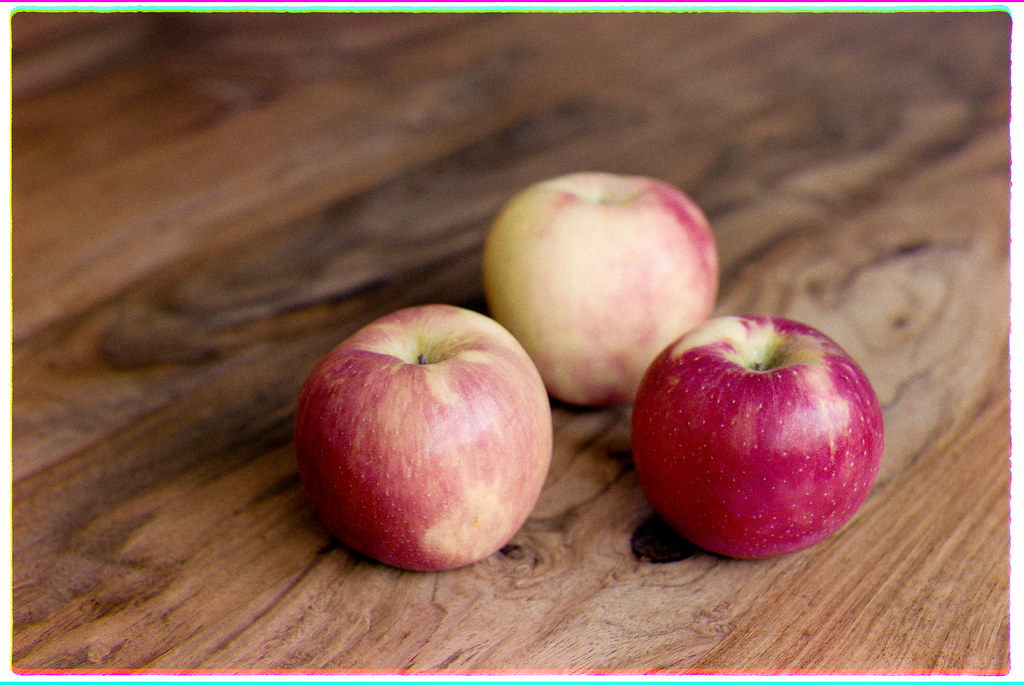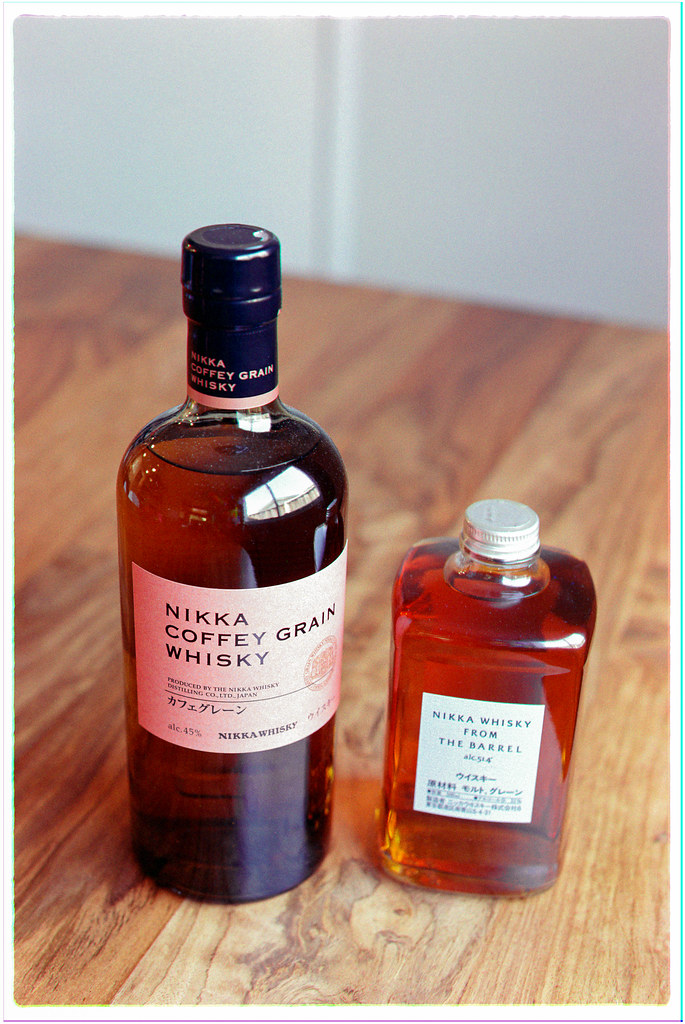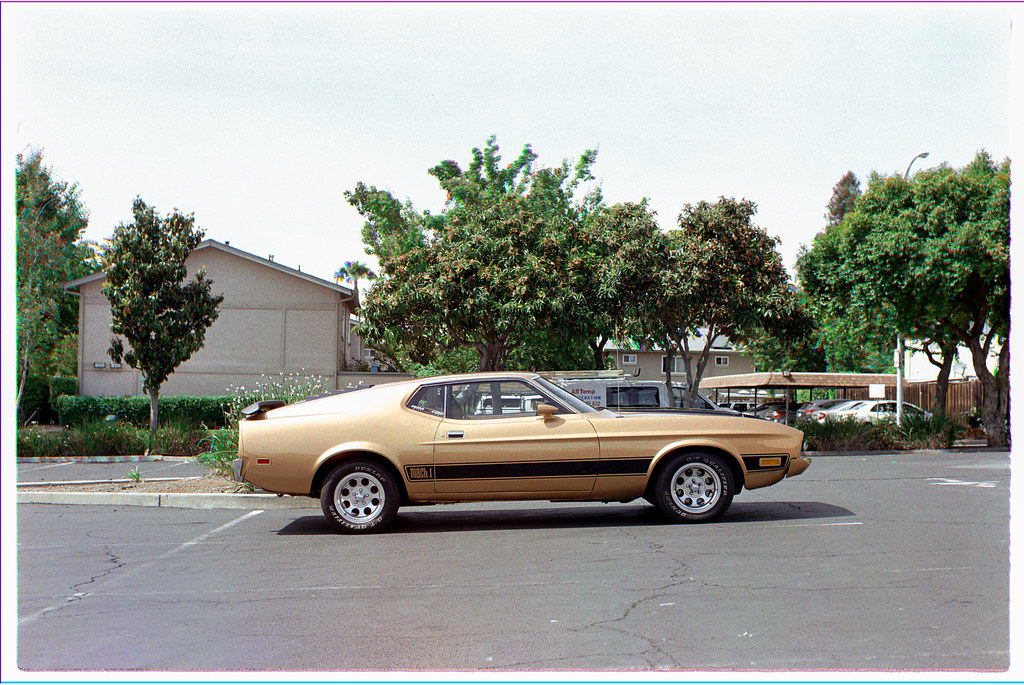tbhv55
Well-known
But is that without using three images shot through three colored filters? That was what I was really wondering about. Specifically, could software replicate the three-color filter effects using a single b&w negative?
No, unfortunately, it can't. The trichromy process - demonstrated superbly by dourbalistar, in this thread - 'assembles' the different grey tones from the three B&W images, and the digital version simply echoes that process. A single B&W white image can't provide the necessary information.
Dwig
Well-known
When I see these pics, I can’t help but wonder if this effect could be replicated purely through software. I’d never want to shoot color film again! But I don’t know anything about software.
Partially.
You can assemble 3 monochrome images, each derived from a single channel of a different color images, to achieve some of the attributes seen here, but not all. You can alter the balance of the 3 channels and can merge shots where some of the subjects moved between the exposures. What you can't do is alter the alter the range of colors "seen" by each of the 3 channels.
The color separation filters that comprise digital sensors, either matrix sensors like those in digital cameras or linear sensors used in scanners, determine the color effect. What frequencies they pass can't be altered later in software. The color separation filters used for images like those in this thread have a large impact on the color rendering. Using filters that pass narrower ranges of colors (e.g. using a #29 red instead of a #25 red, ...) can result is a change in the color rendering that can't be replicated completely in software. You can, with the more powerful software (e.g. Ps, Affinity Photo, ...) create somewhat similar effects by using various adjustments to alter 3 copies of a color image to create 3 B&W images to then reassemble.
dourbalistar
Buy more film
Partially.
You can assemble 3 monochrome images, each derived from a single channel of a different color images, to achieve some of the attributes seen here, but not all. You can alter the balance of the 3 channels and can merge shots where some of the subjects moved between the exposures. What you can't do is alter the alter the range of colors "seen" by each of the 3 channels.
The color separation filters that comprise digital sensors, either matrix sensors like those in digital cameras or linear sensors used in scanners, determine the color effect. What frequencies they pass can't be altered later in software. The color separation filters used for images like those in this thread have a large impact on the color rendering. Using filters that pass narrower ranges of colors (e.g. using a #29 red instead of a #25 red, ...) can result is a change in the color rendering that can't be replicated completely in software. You can, with the more powerful software (e.g. Ps, Affinity Photo, ...) create somewhat similar effects by using various adjustments to alter 3 copies of a color image to create 3 B&W images to then reassemble.
Wow, that seems like a lot of work just to create a color image...
When I see these pics, I can’t help but wonder if this effect could be replicated purely through software. I’d never want to shoot color film again! But I don’t know anything about software.
Peter, you seem like the experimenting type. I remember your Legomat that you built with your son. I say give it a try with RGB filters! The filters themselves are not too expensive, and GIMP is free software.
Peter Jennings
Well-known
Partially.
You can assemble 3 monochrome images, each derived from a single channel of a different color images, to achieve some of the attributes seen here, but not all. You can alter the balance of the 3 channels and can merge shots where some of the subjects moved between the exposures. What you can't do is alter the alter the range of colors "seen" by each of the 3 channels.
The color separation filters that comprise digital sensors, either matrix sensors like those in digital cameras or linear sensors used in scanners, determine the color effect. What frequencies they pass can't be altered later in software. The color separation filters used for images like those in this thread have a large impact on the color rendering. Using filters that pass narrower ranges of colors (e.g. using a #29 red instead of a #25 red, ...) can result is a change in the color rendering that can't be replicated completely in software. You can, with the more powerful software (e.g. Ps, Affinity Photo, ...) create somewhat similar effects by using various adjustments to alter 3 copies of a color image to create 3 B&W images to then reassemble.
Thanks for that explanation! Very helpful.
Peter Jennings
Well-known
Peter, you seem like the experimenting type. I remember your Legomat that you built with your son. I say give it a try with RGB filters! The filters themselves are not too expensive, and GIMP is free software.
I'm tempted! But I also just enjoy pondering the "what if..."
dourbalistar
Buy more film
Fuji apples, not Fujifilm... 
Nikon FM2n, AI Nikkor 50mm f/1.8S, Ultrafine eXtreme 400, developed in LegacyPro L110 at 1:31 for 5.5 minutes. Three individual black and white frames shot through Tiffen #25 Red, #58 Green, and #47 Blue filters, respectively, then combined using GIMP to create a trichrome color image.

2020.05.14 Roll #245-04811-positive-trichrome.jpg by dourbalistar, on Flickr
Nikon FM2n, AI Nikkor 50mm f/1.8S, Ultrafine eXtreme 400, developed in LegacyPro L110 at 1:31 for 5.5 minutes. Three individual black and white frames shot through Tiffen #25 Red, #58 Green, and #47 Blue filters, respectively, then combined using GIMP to create a trichrome color image.

2020.05.14 Roll #245-04811-positive-trichrome.jpg by dourbalistar, on Flickr
dourbalistar
Buy more film
Nikon FM2n, AI Nikkor 50mm f/1.8S, Ultrafine eXtreme 400, developed in LegacyPro L110 at 1:31 for 5.5 minutes. Three individual black and white frames shot through Tiffen #25 Red, #58 Green, and #47 Blue filters, respectively, then combined using GIMP to create a trichrome color image.

2020.05.14 Roll #245-04814-positive-trichrome.jpg by dourbalistar, on Flickr

2020.05.14 Roll #245-04814-positive-trichrome.jpg by dourbalistar, on Flickr
tbhv55
Well-known
Nikon FM2n, AI Nikkor 50mm f/1.8S, Ultrafine eXtreme 400, developed in LegacyPro L110 at 1:31 for 5.5 minutes. Three individual black and white frames shot through Tiffen #25 Red, #58 Green, and #47 Blue filters, respectively, then combined using GIMP to create a trichrome color image.
2020.05.14 Roll #245-04814-positive-trichrome.jpg by dourbalistar, on Flickr
@dourbalistar, I've been impressed with your work on this technique right from the beginning of this thread, but your results are now truly excellent.
This is VERY nice. (and I say this, despite the fact that I detest whisky!
dourbalistar
Buy more film
@dourbalistar, I've been impressed with your work on this technique right from the beginning of this thread, but your results are now truly excellent.
This is VERY nice. (and I say this, despite the fact that I detest whisky!)
Thank you, tbhv55! If you pay close attention to the roll numbers, these are all from my first few attempts at trichromy. I haven't really tried it again since those first few experiments, though I am very happy with the initial results.
dourbalistar
Buy more film
With apologies to those like tbhv55 who detest whisky, here's another still life. This is a hand-filled bottle from the Westland Whiskey distillery. The distillery tour itself is really interesting, but being able to hand-fill a somewhat exclusive bottle is a nice bonus.
Nikon FM2n, AI Nikkor 50mm f/1.8S, Ultrafine eXtreme 400, developed in LegacyPro L110 at 1:31 for 5.5 minutes. Three individual black and white frames shot through Tiffen #25 Red, #58 Green, and #47 Blue filters, respectively, then combined using GIMP to create a trichrome color image.

2020.05.14 Roll #245-04817-positive-trichrome.jpg by dourbalistar, on Flickr
Nikon FM2n, AI Nikkor 50mm f/1.8S, Ultrafine eXtreme 400, developed in LegacyPro L110 at 1:31 for 5.5 minutes. Three individual black and white frames shot through Tiffen #25 Red, #58 Green, and #47 Blue filters, respectively, then combined using GIMP to create a trichrome color image.

2020.05.14 Roll #245-04817-positive-trichrome.jpg by dourbalistar, on Flickr
DaveW
Established
Can I ask how you change the filters without bumping the camera out of position? I assume you are using screw-in filters. When I think I might do this, I cannot imagine I could keep the camera still. Is there a motor drive involved (again, thinking I would move the camera if I advanced the film).
dourbalistar
Buy more film
Can I ask how you change the filters without bumping the camera out of position? I assume you are using screw-in filters. When I think I might do this, I cannot imagine I could keep the camera still. Is there a motor drive involved (again, thinking I would move the camera if I advanced the film).
I'm shooting on a tripod to keep the camera as still as possible, and using circular screw-in Tiffen filters. I also use a cable release, because some of the indoor shots require slower shutter speeds, especially when compensating for the filter factors. I try my best not to move anything while changing filters, and advance the film very slowly and carefully by hand. Thankfully, the FM2n's advance lever is pretty smooth and doesn't have too much resistance. YMMV with a different camera.
If you move the camera ever so slightly, I think you can still salvage a trichrome image when stacking in post. You have to line up the three images anyway, but it just might take a bit more work to get everything aligned. Or you just live with some of color aberrations and maybe a bit less sharpness because things aren't perfectly aligned. Hope that helps!
dourbalistar
Buy more film
I spotted this Mustang while driving home with my kids, and I immediately pulled over into the parking lot. I set up three shots as quickly as I could, but my kids still complained that I took too long taking photos. The result was worth it.  I believe it's a 1973 Ford Mustang Mach 1.
I believe it's a 1973 Ford Mustang Mach 1.
Nikon FM2n, AI Nikkor 50mm f/1.8S, Ultrafine eXtreme 400, developed in LegacyPro L110 at 1:31 for 5.5 minutes. Three individual black and white frames shot through Tiffen #25 Red, #58 Green, and #47 Blue filters, respectively, then combined using GIMP to create a trichrome color image.

2020.05.14 Roll #245-04820-positive-trichrome.jpg by dourbalistar, on Flickr
Nikon FM2n, AI Nikkor 50mm f/1.8S, Ultrafine eXtreme 400, developed in LegacyPro L110 at 1:31 for 5.5 minutes. Three individual black and white frames shot through Tiffen #25 Red, #58 Green, and #47 Blue filters, respectively, then combined using GIMP to create a trichrome color image.

2020.05.14 Roll #245-04820-positive-trichrome.jpg by dourbalistar, on Flickr
45govt
Established
I spotted this Mustang while driving home with my kids, and I immediately pulled over into the parking lot. I set up three shots as quickly as I could, but my kids still complained that I took too long taking photos. The result was worth it.I believe it's a 1973 Ford Mustang Mach 1.
Nikon FM2n, AI Nikkor 50mm f/1.8S, Ultrafine eXtreme 400, developed in LegacyPro L110 at 1:31 for 5.5 minutes. Three individual black and white frames shot through Tiffen #25 Red, #58 Green, and #47 Blue filters, respectively, then combined using GIMP to create a trichrome color image.
2020.05.14 Roll #245-04820-positive-trichrome.jpg by dourbalistar, on Flickr
Hello,
Great photos, could you post the three shots before combining to show what they look like pre?
Thanks
Don
dourbalistar
Buy more film
Hello,
Great photos, could you post the three shots before combining to show what they look like pre?
Thanks
Don
Thank you, Don! The differences in the three shots for the Mustang are pretty subtle. This one below probably shows the differences better. The top row, left to right: Tiffen #25 Red, #58 Green. Bottom row, left to right: Tiffen #47 Blue, no filter. The final image can be seen in Post #44 above (or in the comments if you click through to Flickr).

Filtered Ektachrome by dourbalistar, on Flickr
KenR
Well-known
Question
Question
Do you add in any of the "pure" monochrome frame (no filter)? I remember reading about the additive process in the distant past, and I seem to recall that the author added in a no filter channel to give more density to blacks. Not that you need to as the results are amazing as is.
Question
Do you add in any of the "pure" monochrome frame (no filter)? I remember reading about the additive process in the distant past, and I seem to recall that the author added in a no filter channel to give more density to blacks. Not that you need to as the results are amazing as is.
dourbalistar
Buy more film
Do you add in any of the "pure" monochrome frame (no filter)? I remember reading about the additive process in the distant past, and I seem to recall that the author added in a no filter channel to give more density to blacks. Not that you need to as the results are amazing as is.
Thank you, KenR! No, I didn't use the "pure" monochrome in any of the trichrome images. For most of the images, I only took three filtered shots anyway, so it wasn't even an option. Only for a few did I also take a fourth unfiltered shot, mostly out of curiosity as to how it would look in comparison.
If I needed more black density, I probably achieved it through my final edits in Lightroom. Perhaps I could try adding the fourth layer, to see if it would give me denser blacks "out of the box" so to speak.
Peter Jennings
Well-known
Thanks for clarifying the process! Screwing on and unscrewing the filters seems tedious. If I were to give it a go (and I may do it some day!), I'd probably get some oversized filters, or gels, and just hold them in front of the lens. Maybe mount all three on a custom holder so that they don't need to be handled individually?
Keep up the good work!
Keep up the good work!
dourbalistar
Buy more film
Thanks for clarifying the process! Screwing on and unscrewing the filters seems tedious. If I were to give it a go (and I may do it some day!), I'd probably get some oversized filters, or gels, and just hold them in front of the lens. Maybe mount all three on a custom holder so that they don't need to be handled individually?
Keep up the good work!
Yeah, using oversized filters with a square holder is probably a more ideal way to go, but I just went with a less expensive kit, which are simple, circular filters from Tiffen. Some of the larger, high quality square glass filters can get quite expensive! The Tiffen filters I got were about $20 each, so I was able to experiment with a modest investment. It is a bit nerve wracking changing filters between shots... you want to screw filters in and out, but you don't want to screw up!
I've seen other cheaper methods, just using (plastic) filter gels and holding them in front of the lens as you describe. With that method, however, I think you risk a bit of leakage if you gel filter doesn't fit square and tight over the lens. Probably worse is using cheap filters that don't have the right color filtration, resulting in less than ideal color casts in the final image. I still have to do some minor color correction with the filter set that I'm using, but the final results generally look pretty natural to my eye.
This video shows some results using simple plastic gel filters. If you're not too picky about slight color casts the final image, then this is probably the easiest and cheapest method. In the end, it's all about some fun experimentation.
https://www.youtube.com/watch?v=w6GSVIJCOXA
dourbalistar
Buy more film
A COVID-19 commodity... 
Nikon FM2n, AI Nikkor 50mm f/1.8S, Ultrafine eXtreme 400, developed in LegacyPro L110 at 1:31 for 5.5 minutes. Three individual black and white frames shot through Tiffen #25 Red, #58 Green, and #47 Blue filters, respectively, then combined using GIMP to create a trichrome color image.

2020.05.14 Roll #245-04823-positive-trichrome.jpg by dourbalistar, on Flickr
Nikon FM2n, AI Nikkor 50mm f/1.8S, Ultrafine eXtreme 400, developed in LegacyPro L110 at 1:31 for 5.5 minutes. Three individual black and white frames shot through Tiffen #25 Red, #58 Green, and #47 Blue filters, respectively, then combined using GIMP to create a trichrome color image.

2020.05.14 Roll #245-04823-positive-trichrome.jpg by dourbalistar, on Flickr
Share:
-
This site uses cookies to help personalise content, tailor your experience and to keep you logged in if you register.
By continuing to use this site, you are consenting to our use of cookies.

